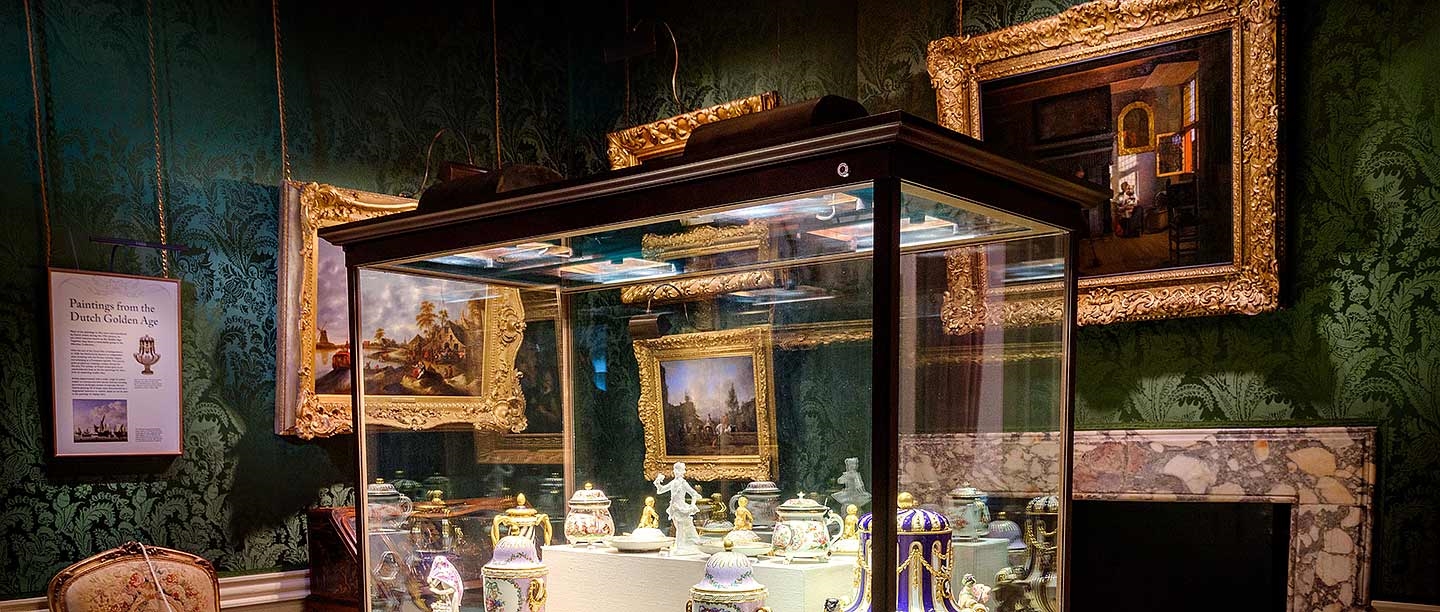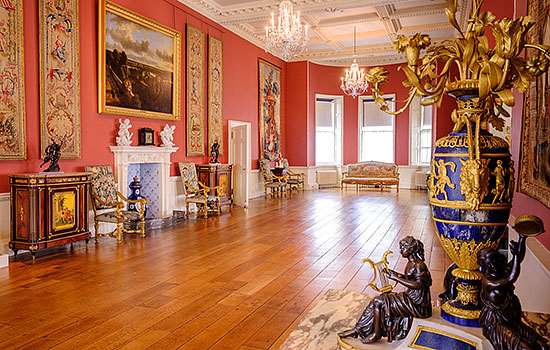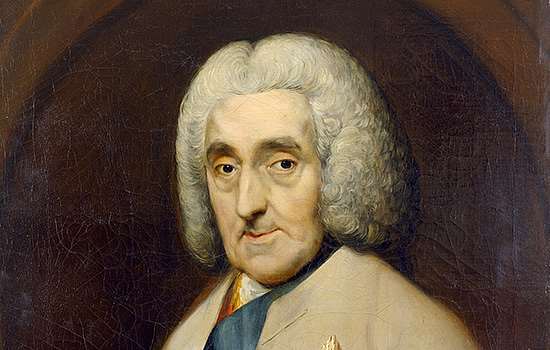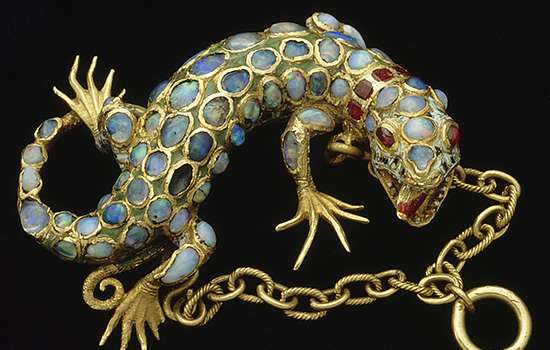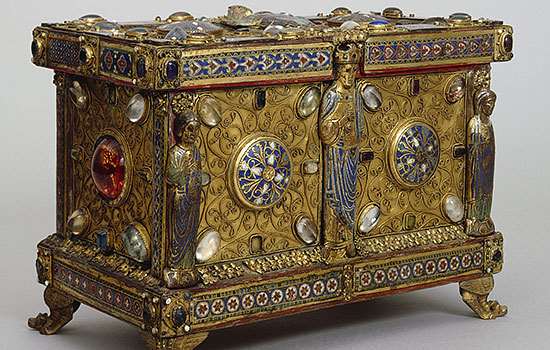Star object
A Gentleman and a Lady at a Virginal
- Signed Gabriel Metsu
- About 1667
- Oil on panel
- Amsterdam, Netherlands
Metsu was a master at telling open-ended visual stories that draw the viewer into the dramatic moment represented. In this fine example we see a well-dressed woman seated at a piano. She is distracted by a man who offers her a glass of wine, while her lapdog, who represents loyalty, sniffs cautiously at his boots. Both the woman and her dog seem uncertain about the man’s intentions. Will she or won’t she give into his advances?
Metsu was equally renowned for his skill in harmonising colours. Here he injects a largely muted palette with dashes of bright red or orange pigment, which further animate the scene.
By 1900, when Wernher bought this work, Metsu was regarded as one of the greatest painters of the Dutch Golden Age.
Artists and makers
A Yacht at Anchor Firing a Salute
- Signed Willem Van de Velde the Younger
- About 1658
- Oil on canvas
- Amsterdam, Netherlands
While small in scale, this painting packs a visual punch with its bright palette, spirited handling and the sharp, dark forms of the vessels that dominate the composition’s middle ground. At the centre, a Staaten Jaght (‘States yacht’) fires a salute as a barge pulls away on the left. The painting is signed with Van de Velde’s initials, WVV.
By 1762, Van de Velde’s talents at representing the sea had been recognised beyond the Netherlands, and that winter he and his father, also a successful marine painter, were invited to England by King Charles II. Together they produced a number of highly ambitious sea pieces for the king and nobility, changing the face of marine painting and influencing the genre for centuries to come.
